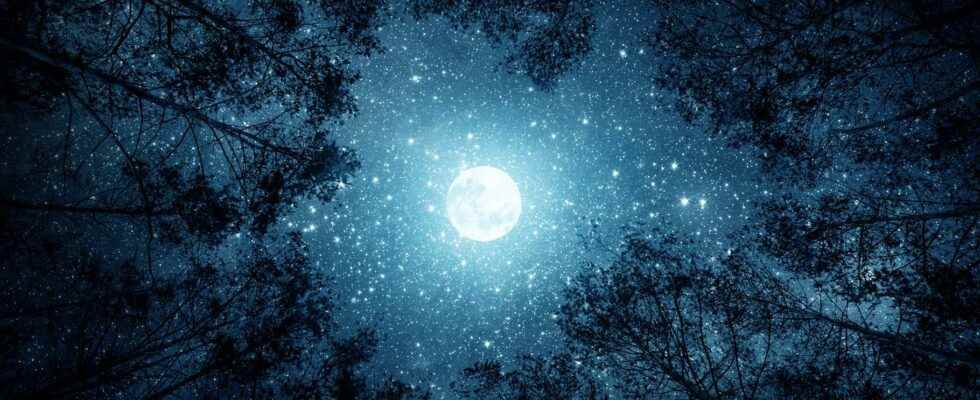There’s the Thunder Supermoon, the Strawberry Supermoon, the Deer Supermoon, and even the Sturgeon Supermoon. The media – mainly English-speaking, but increasingly French-speaking too – are making a big deal out of it. But what is really hiding behind these strange names?
You will also be interested
[EN VIDÉO] Why is the Moon sometimes visible in broad daylight? For most people, the moon is synonymous with night. Yet we have all seen it in broad daylight. How to explain this phenomenon ?
” The next Full moon will be a supermoon strawberries. » This is the sentence that can be read on the very serious site Internet of NASA, in its Full Moon Guide, June-July 2022. A Strawberry Supermoon? What to enthuse a lot of media. But on closer inspection, this Full Moon is not very exceptional.
Let us first note that there is no official and scientific definition of what a supermoon is. It is simply accepted that the term supermoon — remembering all the same that it comes to us from astrology… — can be attributed to a full moon which occurs when our natural satellite reaches the perigee of its orbit around the Earth. Understand, when the Moon is closest to us. Or in any case, that it is at a distance from our Planet close to the limit admitted for reference of 356,600 kilometers.
Names that depend on cultures
But why then so many different names for these supermoons. Already because of the supermoons, there can be several in the year – four in 2022, for example. A full moon occurring more or less every 29 days. Then, because ancient civilizations used to give names, not to supermoons, but to full moons. In the United States, for example, Native Americans called the June Full Moon the Strawberry Full Moon. With reference to the short harvest period of the Red fruit.
It is interesting to note that, however in Europe, this same full moon gate rather the name of Full Honeymoon, because it corresponds to the period during which the honey is ready to be harvested. It is even sometimes called the Full Rose Moon. Because roses also bloom at this time. Or maybe because, remaining low on the horizon, it tends to take on this color.
When a supermoon occurs in July, it can be called a supermoon of the thunderwith reference to many thunderstorms which occur at this time, or stag supermoon because that is when their new wood grow.
Before concluding, note all the same that, on the occasion of a supermoon, the diameter of the Moon appears to us to be approximately 14% larger than the average. But the difference remains difficult to perceive. Nothing very scientific nor very spectacular, therefore, in the supermoon. Maybe a little more poetry, all the same. And that’s it already…
Interested in what you just read?
